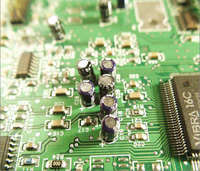Simple Circuits Curriculum

This lesson offers a bridge between different conceptual models using Cyclic Simultaneous Causality and algorithms for reasoning about voltage, resistance, and the resulting current. It is designed to help students see the links between resistance, voltage, and current so that the relationship known as Ohm's Law makes sense to them. It involves reasoning from the constraints in the system.
Section 7: Understanding Goals
Subject Matter
- Ohm's Law specifies the relationship between voltage, resistance, and current.
- Ohm's Law is I = V/R, where I = current, V = voltage, and R = resistance.
Causality
- urrent can be viewed as caused by the relationship between voltage and resistance. You can't manipulate current directly. You can only manipulate the relationship between voltage and resistance to change the current.
- Instead of reasoning about the circuit by using a causal model, you can reason about it using the "constraints" (resistance, voltage, and current). Many scientists think of it this way. Constraint-based reasoning makes it easy to do calculations. Difficulties can arise if you forget how the constraints are related to each other, so it helps to have a causal model to fall back on.


